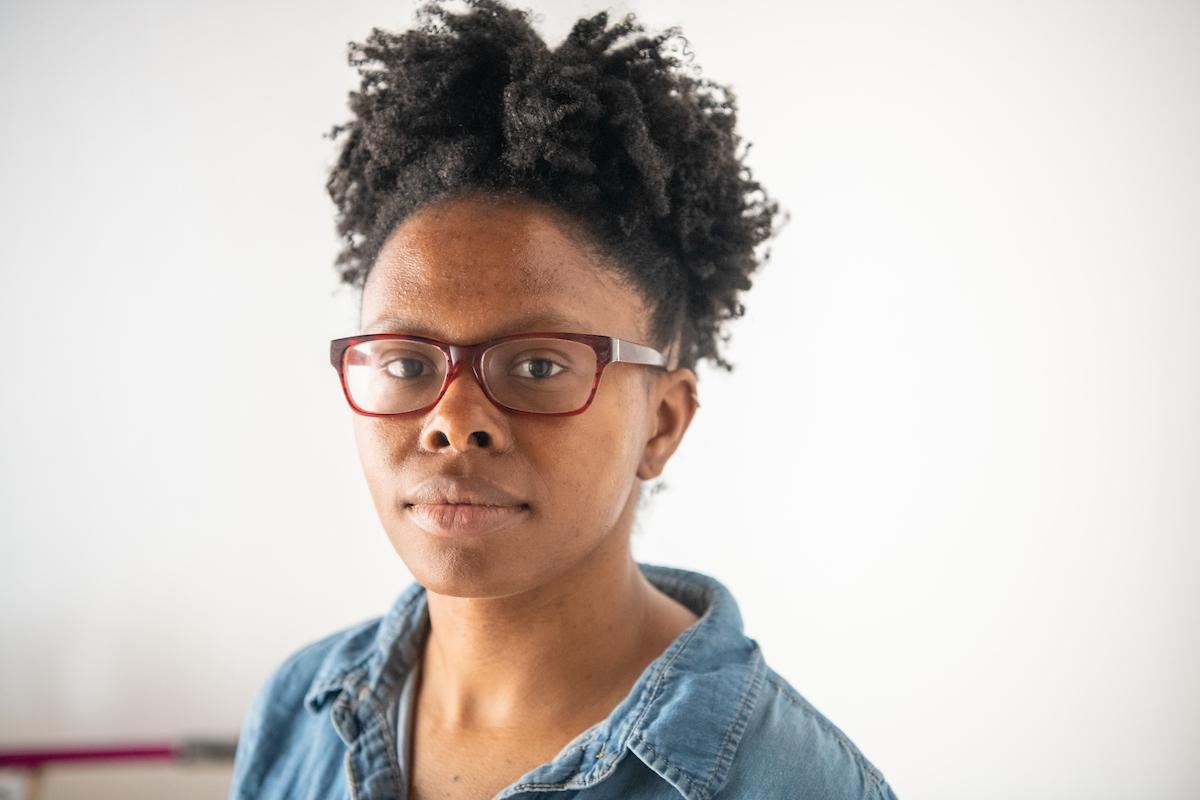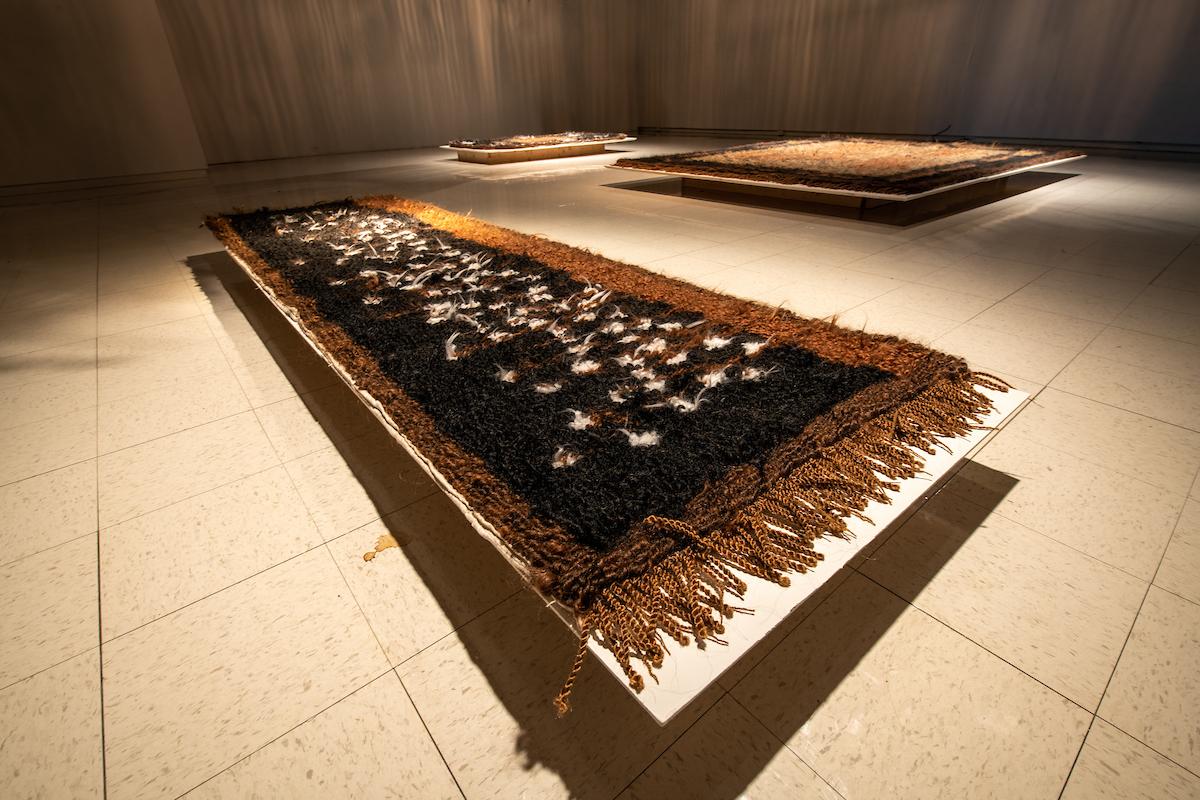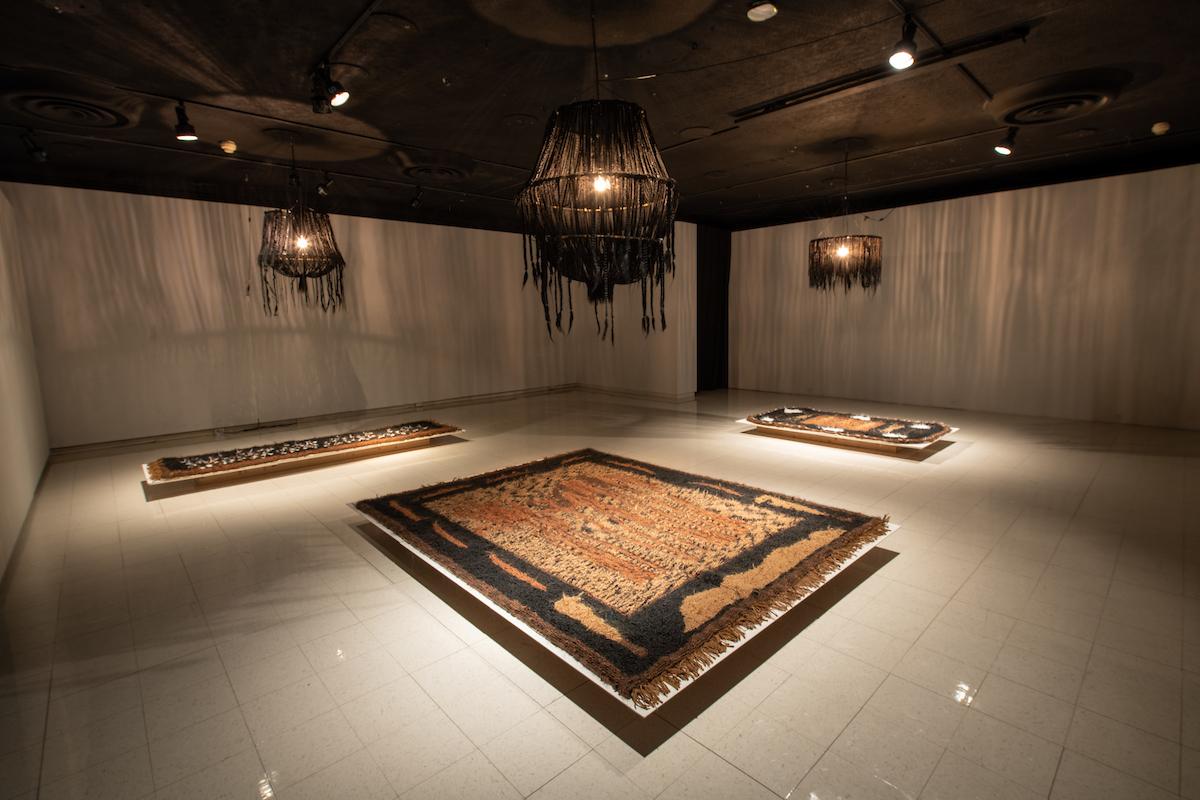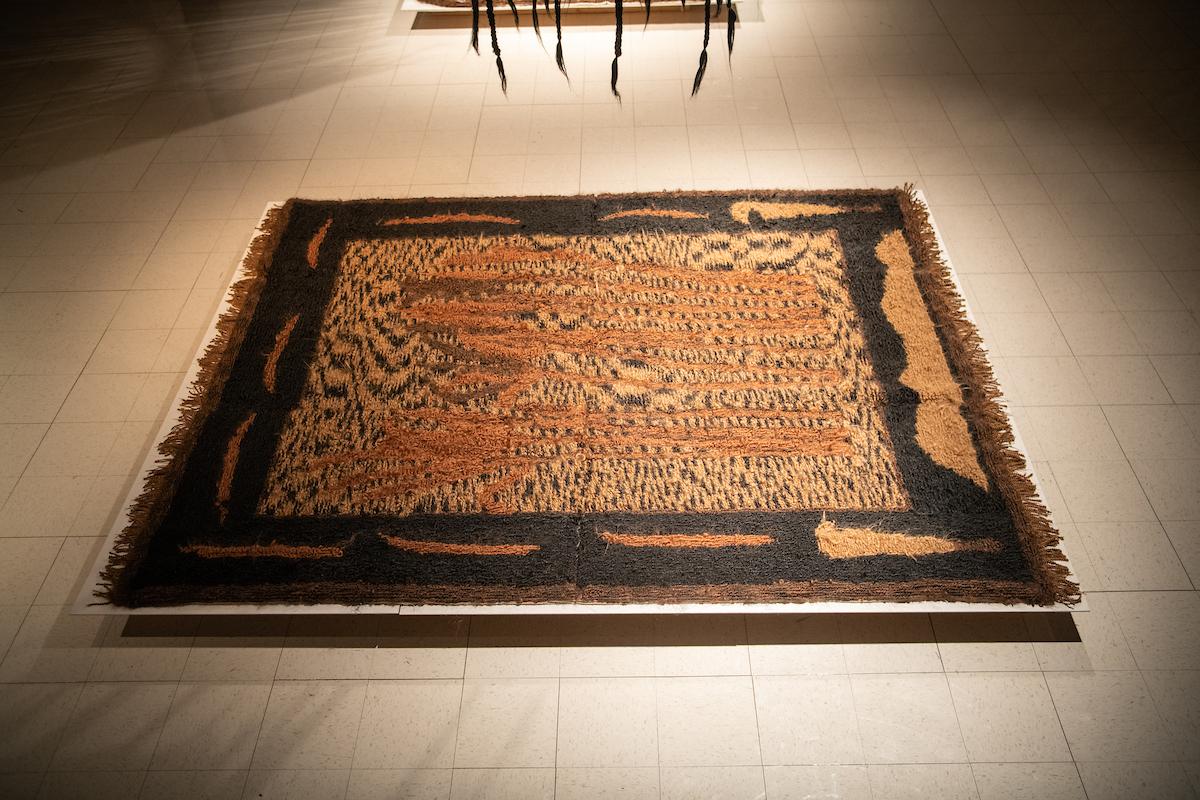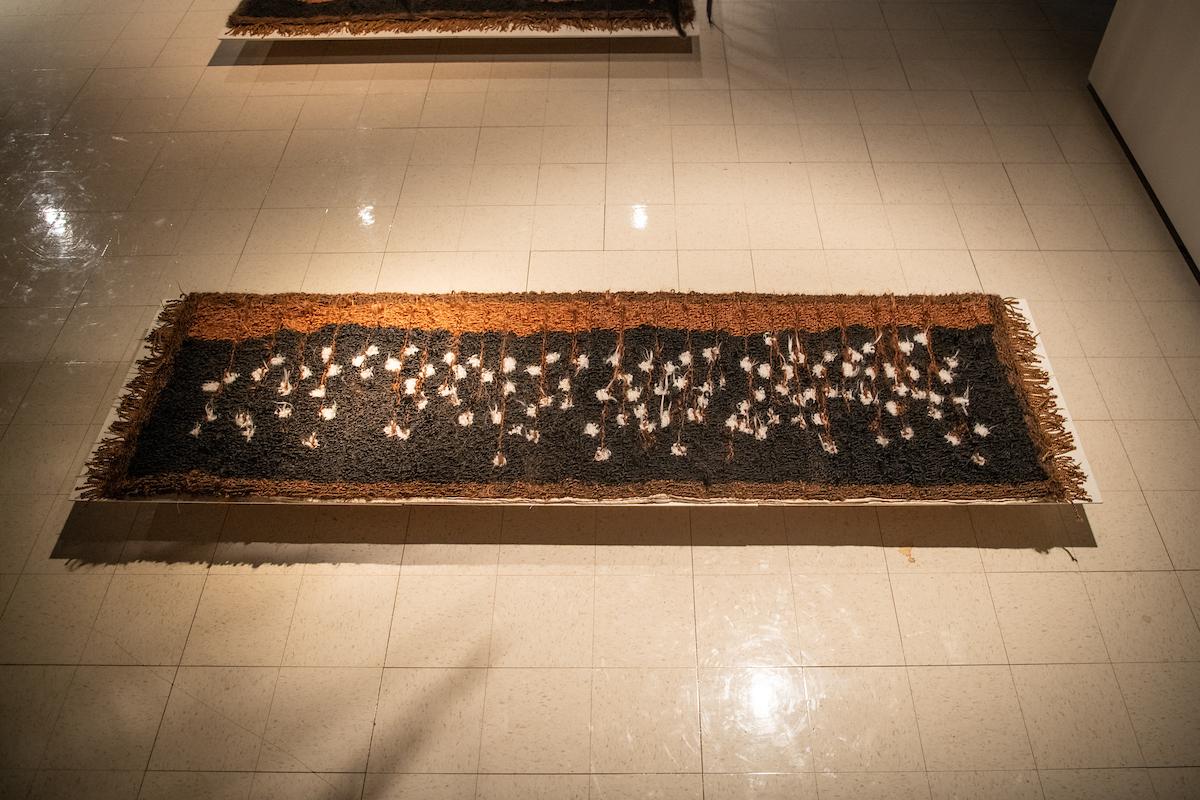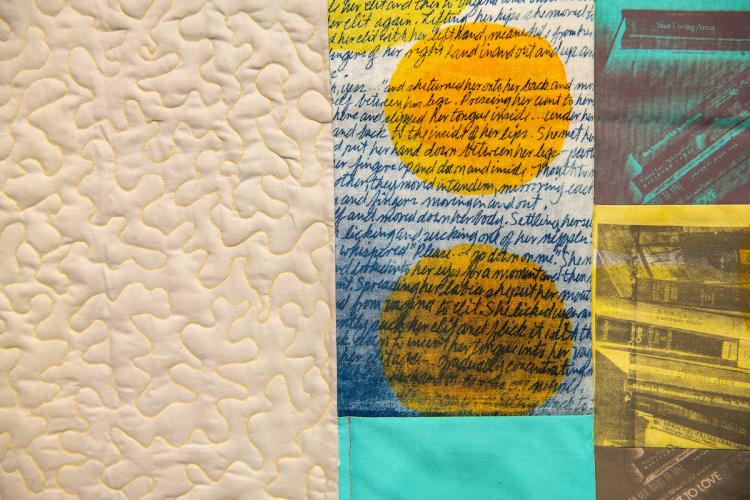
Socially-distanced MFA student art galleries

Students in Ohio University's master of fine arts program worked years to create artwork to show to the public during their thesis exhibition galleries before they graduate in May. Due to the ongoing global pandemic, classes at OHIO were moved online for the remainder of spring semester, students moved away from Athens, and their galleries were no longer able to be open to the public.
However, some of them were still able to display their work in the gallery in Seigfred Hall. So, we thought, why not make their work available to the public to enjoy while socially-distanced? Note, these photographs may not entail the entirety of their galleries.
Something in the Hands
Third-year MFA Printmaking student Belle-Pilar Fleming's exhibit, "Something in the Hands," examines the lineage and identify formation within the spaces of queer archives, particularly as it pertains to the lives of queer women. Fleming said she learned quite a bit from creating the pieces in her gallery.
"Of course working so consistently has helped me to improve and expand my technical skills, but it has given me a lot to think about conceptually as well," she explained. "My artistic works are very research-driven. I enjoy diving academically deep into the subject matter, and one of the things that can be challenging is figuring out how best to translate that research to an audience. You want the work to be conceptually rich but still accessible, educational yet artistically engaging. This project has taught me a lot about finding that balance."
Fleming said she was just grateful for the opportunity to install her work at all.
"Most of my peers have been afforded the same opportunity," she added. "This experience has made me think a lot about what it means to be an artist and about how so much of what we do is motivated by a desire to connect with others. I feel fortunate to still have a digital platform in which to do that, even if there are elements of the work which are hard to fully experience online."
According to Fleming, archives manifest in a myriad of different forms, from the personal collection to the institutional body. Much of the work in "Something in the Hands" draws on source materials found in the Ohio Lesbian Archive, a small organization based out of Cincinnati. The physical space of the archive itself, as well as the subjects which its materials address, are equal points of interest in Fleming's work. Viewers are invited to consider the archive as an affective space, as well as one where negotiations of visibility, personal experience, and political realities are interwoven.
Fleming said she creates compositions which are dynamic, and at times, unexpected. She enjoys working with color and the ways in which printed color layers interact.
"Many of the pieces in this body of work have a fragmented or collaged quality. That is in part due to the nature of the subject matter, and in part due to my own aesthetic sensibilities," she noted. "I also enjoy incorporating figurative elements and have a particular interest in the way gesture, clothing, and body language hold affective space."
More of Fleming's work can be found at belle-pilarfleming.com or on her Instagram at https://www.instagram.com/belle.pilar/.
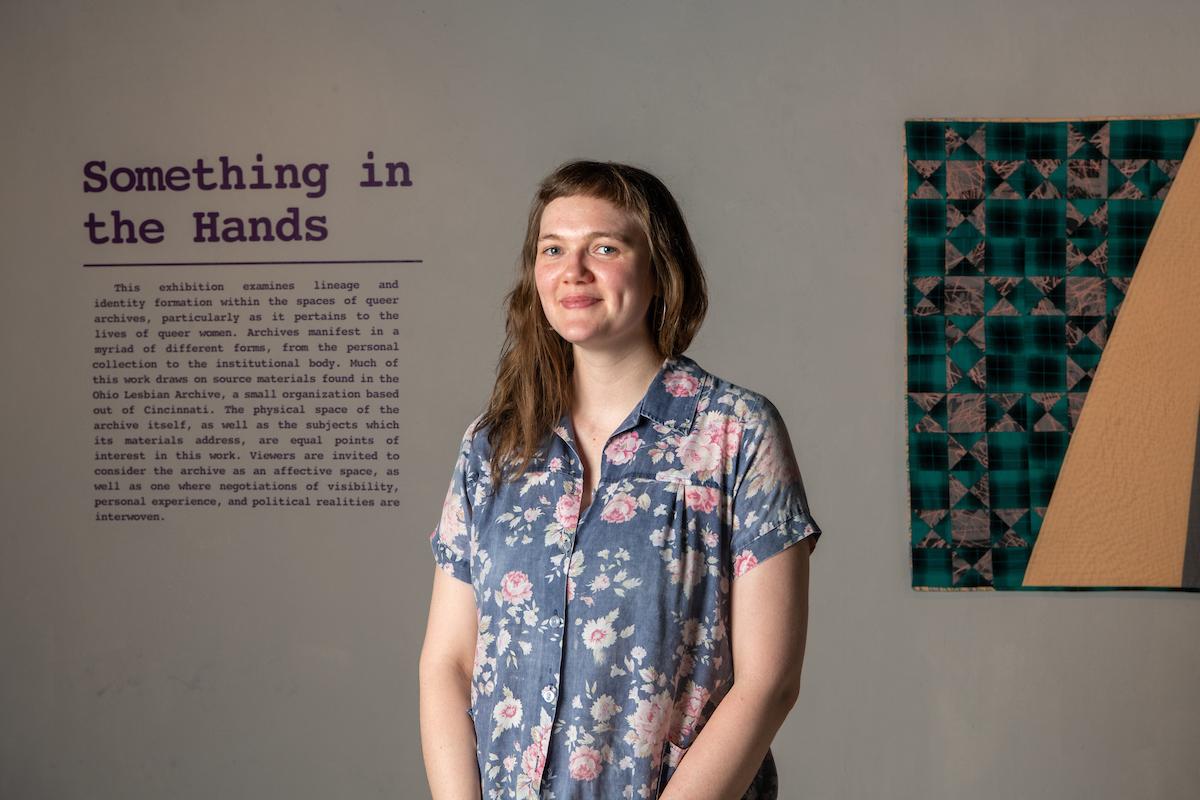
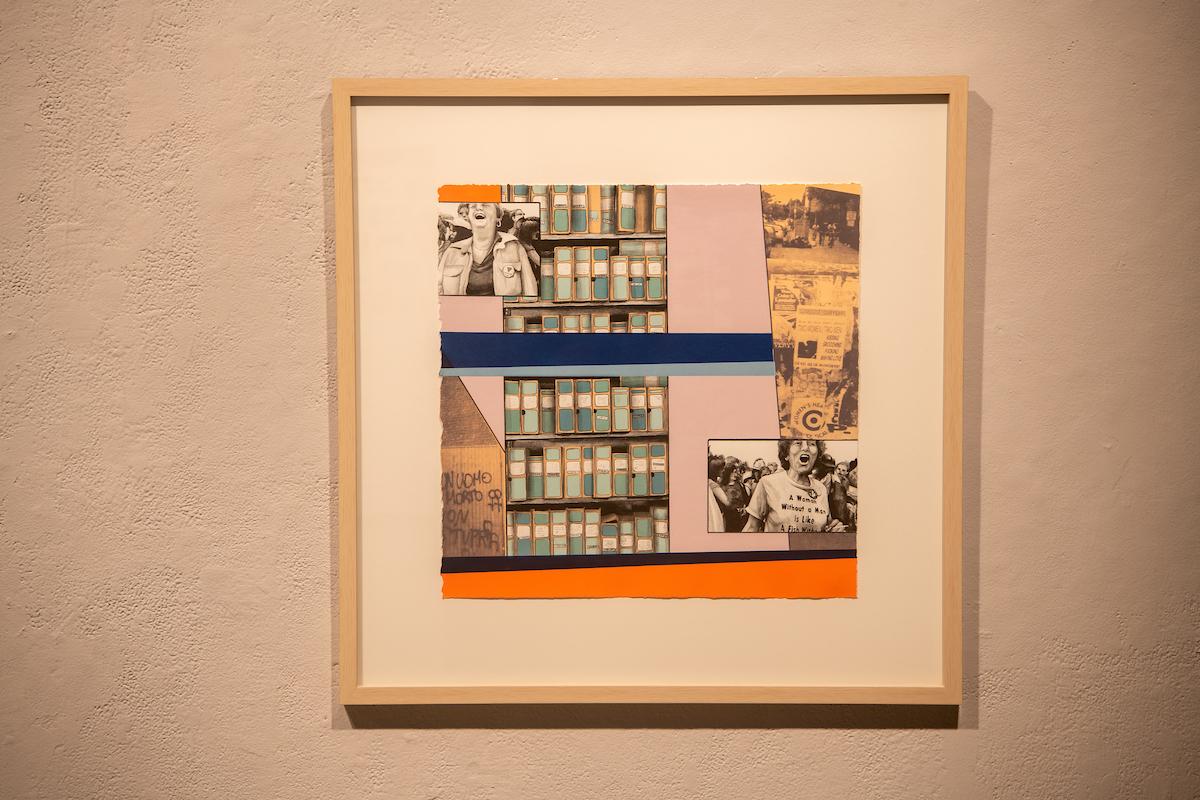
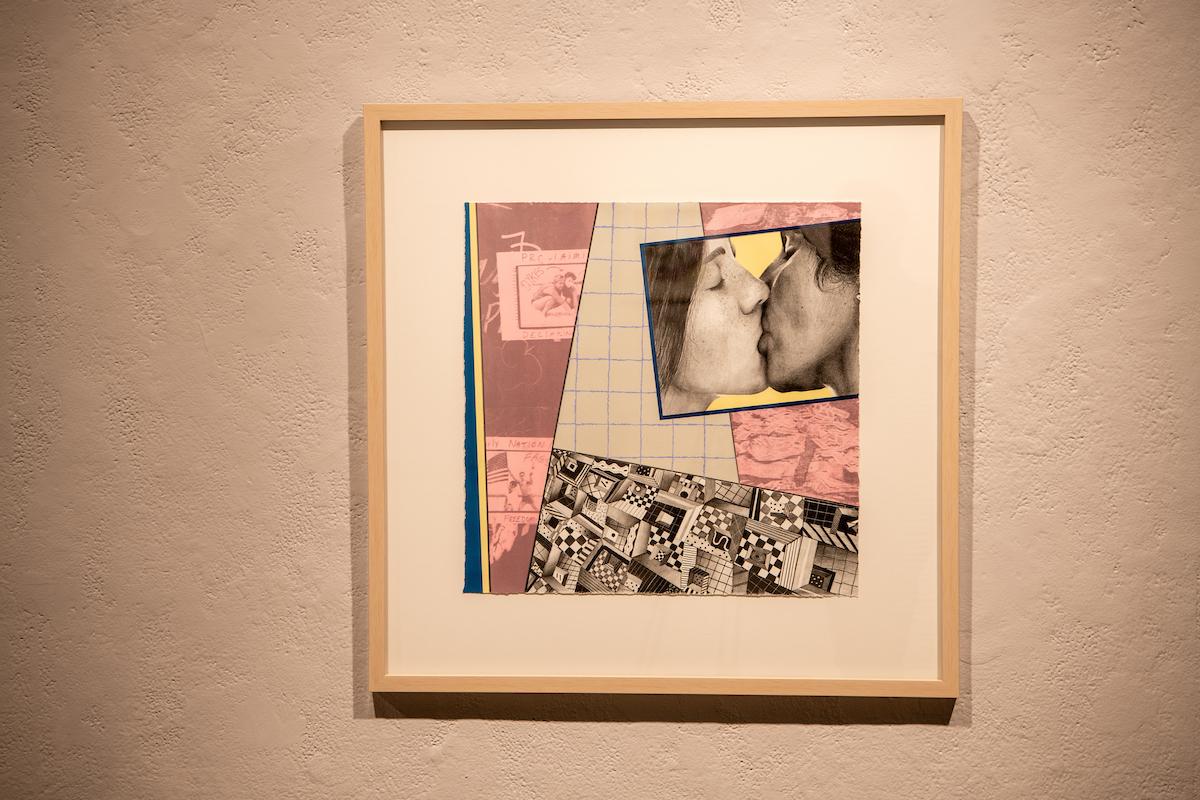
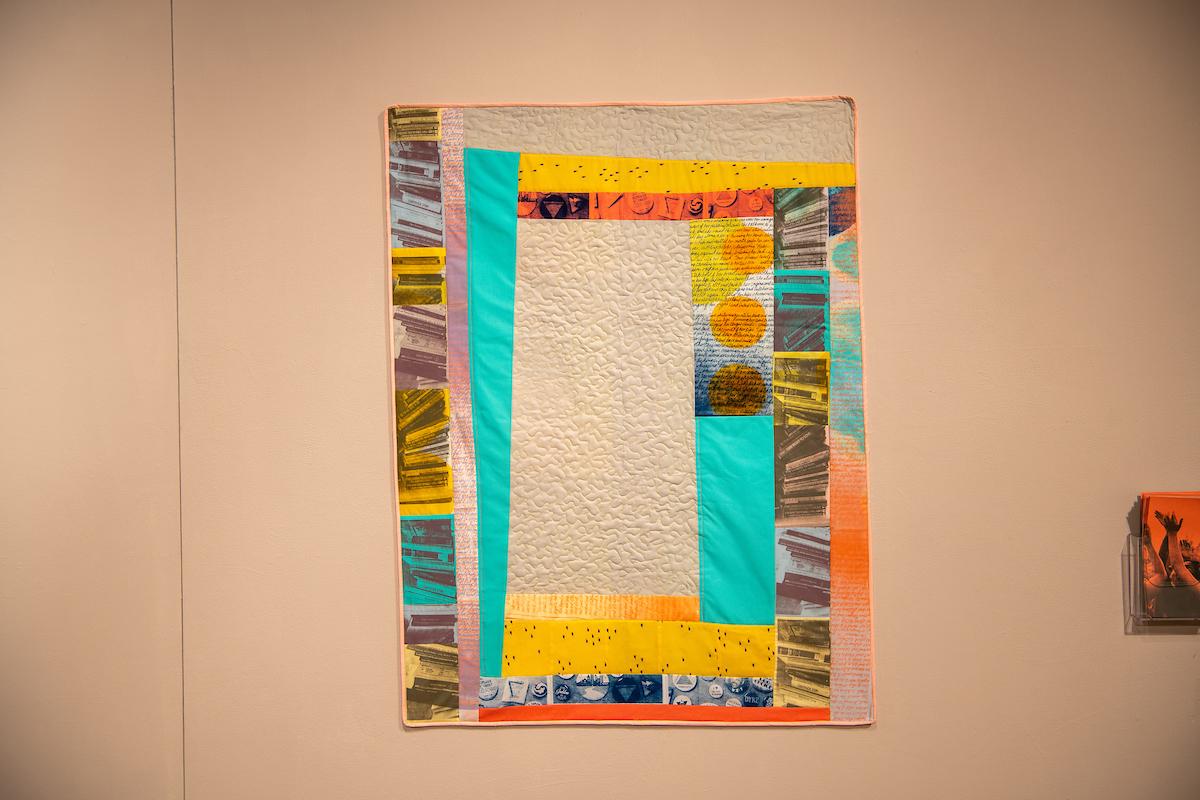
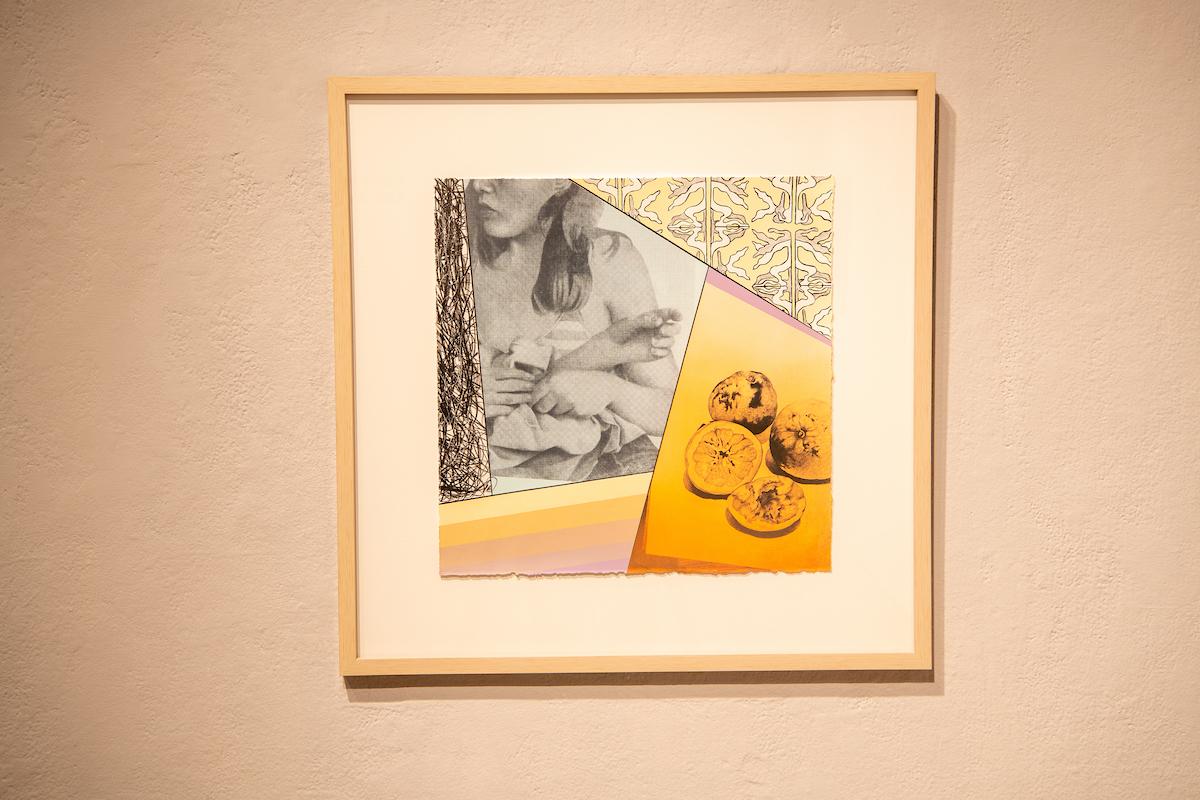
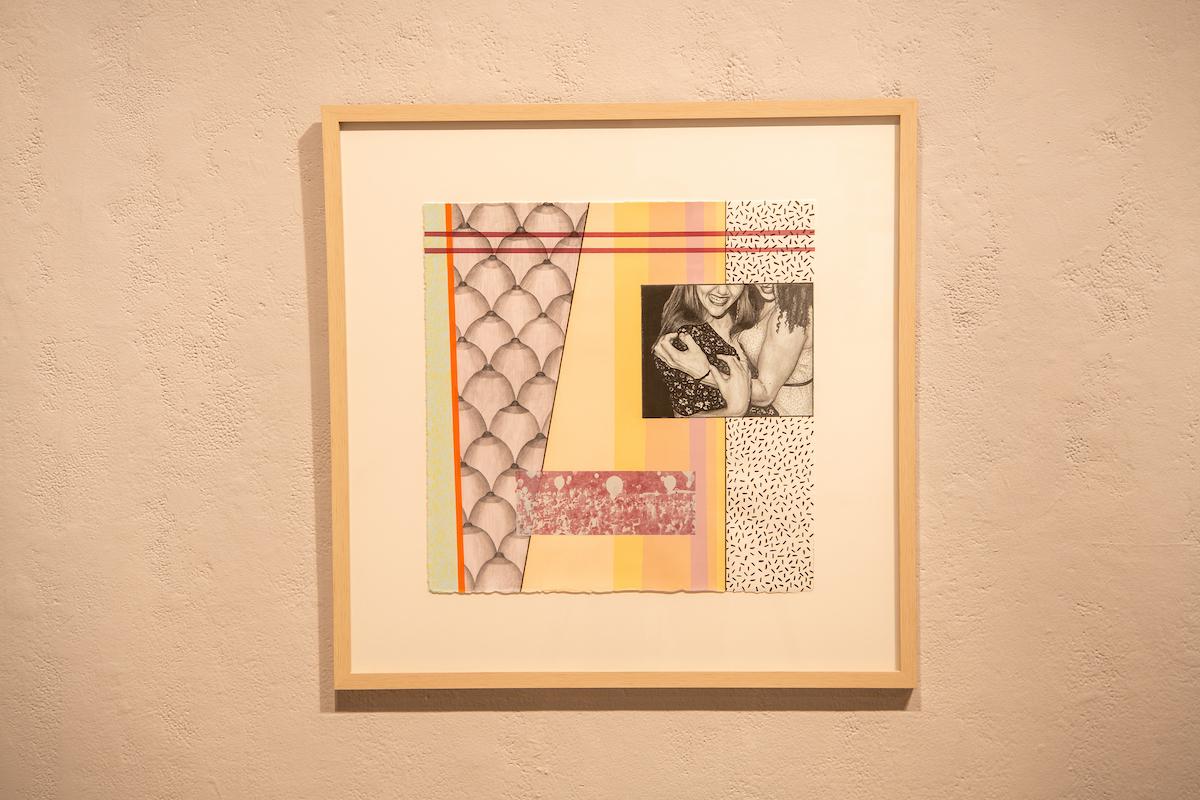
I Hear You Now, I See You Then
Third-year MFA Sculpture+Expanded Practice student Quinn Hunter's exhibit, "I Hear You Now, I See You Then," serves to uncover, elevate and challenge the erasure of the labor of enslaved African American women in the antebellum south from the contemporary architectural spaces and landscapes. These art objects, according to Hunter, refer to the luxury objects that were able to be purchased from the profit made from enslaved labor.
For her project, Hunter looked through countless databases about this period of time and noticed how widespread this erasure of this particular history is, and how ingrained it is into the way people view this period of time.
"I am grateful to have documentation of the work, but it hard knowing that many of my fellow peers won't have the chance," Hunter explained.
Each set of objects is tailored to a specific plantation home and site that is using erasure to profit from these sites of historic pain. All the sites referenced in Hunter's gallery are presently used as wedding venues.
"It is only through erasure that such a happy event can be held in a space of such grand historic pain," Hunter explained. "It is through my own labor and making that I am combating this trend. By using a material that is so ingrained and socially connected to the Black body to make these objects I am not only re-inscribing the history of enslaved labor back into these sites but connecting the historic Black body to the contemporary Black body."
Hunter noted she does not have an aesthetic because she's not concerned with beauty.
"I am concerned with remembering a past that has be erased or forgotten through material and labor that connected that memory to the contemporary," she added. "These objects hold truth and I believe that is more important than beauty."
More of Hunter's work can be viewed at www.quinnahunter.com.
